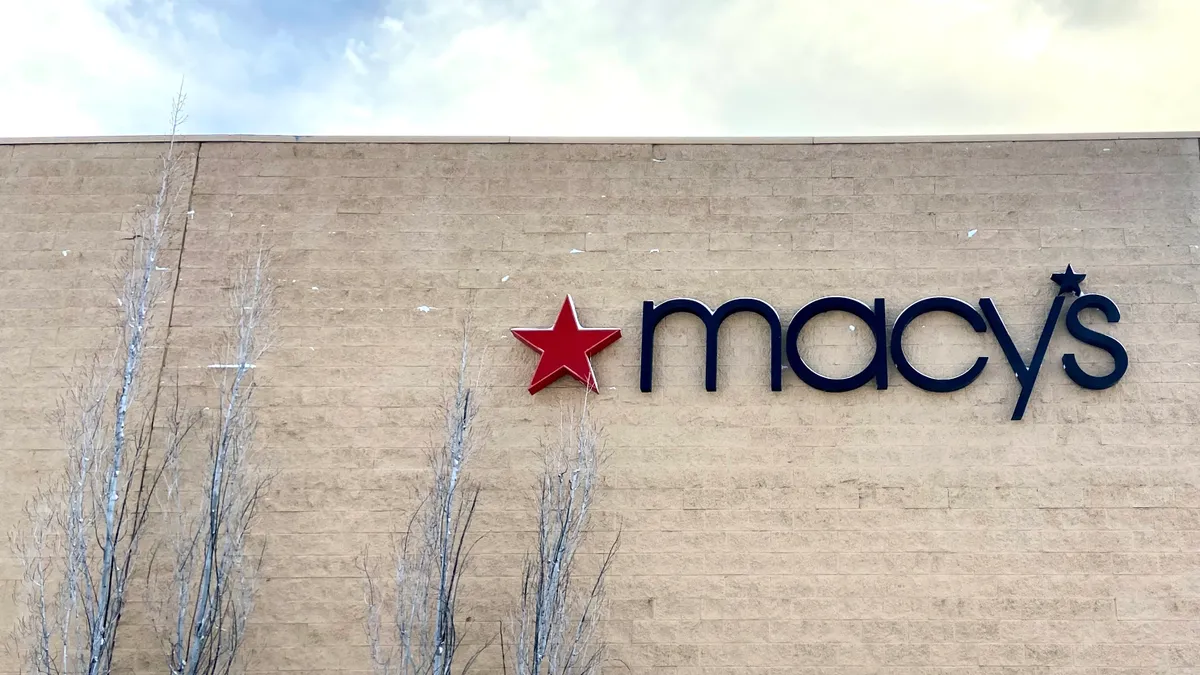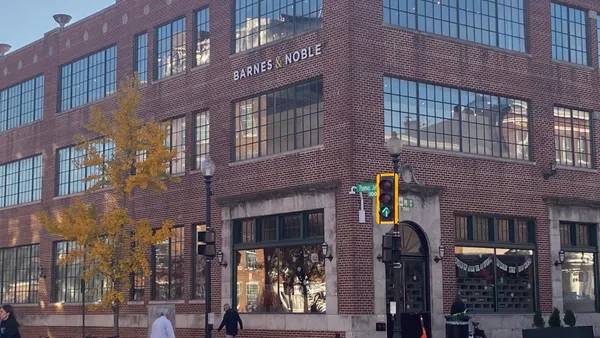Dive Brief:
-
Macy’s Q1 net sales fell 6.8% year over year to $5 billion, with brick-and-mortar sales down 6% and e-commerce down 8%. Overall comps, including concessions, fell 7.9%. By brand, Macy’s comps fell 7.9%, Bloomingdale’s comps fell 4.3% and Bluemercury comps rose 4.3%.
-
Merchandise inventory was down 7% year over year and 16% versus 2019, “reflecting ongoing disciplined inventory management,” per a company press release. Gross margin rose to 40% from 39.6% last year and 38.2% in 2019. Net income fell 45.8% to $155 million.
-
Citing consumer pressures, the department store slashed its guidance. Macy’s now expects net sales to reach $22.8 billion to $23.2 billion, down from its previous expectation for $23.7 billion to $24.2 billion, and comparable sales to fall 6% to 7.5%, worse than its previous expectation for a 2% to 4% decline.
Dive Insight:
Unlike Nordstrom, which hours before reiterated its full-year guidance despite its own Q1 weakness, Macy’s is bracing itself for a rough year.
Some of the weakness in recent months was due to merchandising missteps. The company moved too quickly to get spring and summer apparel into stores, just as much of the country experienced unseasonably cold temperatures, according to CEO Jeff Gennette. Stores didn’t have enough warmer or seasonless clothing on offer, he said. Plus, consumers are cautious right now.
“Ultimately, sell-throughs were below expectations as our customer became increasingly more deliberate in how they are allocating discretionary spend and buying closer to need,” he told analysts Thursday.
In addition to adding more seasonless options, the retailer anticipates offering more "newness," including exclusives in beauty and toys.
The company runs 310 off-price Backstage stores, all but nine within full-line Macy’s stores, and plans to open nine more this year. That business fared better in Q1, thanks to more seasonless product and lower prices, said Gennette, who noted that Backstage comps at Macy’s stores outperformed the full-line operation by about 150 basis points.
The trends at higher-end Bloomingdale’s were more encouraging, indicating that the Macy’s customer is more budget-conscious, and Gennette said the company is monitoring that closely. The high end of its new guidance assumes that the economic pressures that showed up in late spring will persist, while the low end contemplates even more deterioration, he said.
“We will not carry problems from one quarter to the next. We have moved quickly to improve the composition of our assortments for the back half,” he said. “At the same time we are also taking a more cautious view of our customer. ...If demand improves, we will use our ample inventory receipt reserve, which is above last year's levels, to chase into areas of strength as they materialize. Availability of goods remains robust and we are confident that with our strong liquidity position, we will be able to secure the right product to support demand curves, if justified.”
Macy’s is particularly vulnerable to the hesitation among consumers, and a shift in priorities toward experiences and services, because it serves a middle-income customer, analysts said. But it has also faltered as a retailer, according to GlobalData Managing Director Neil Saunders.
“This is a longstanding issue, but it becomes even more of a problem when consumers become cautious about spending,” he said in emailed comments. “In this kind of environment retailers need to entice customers into buying. Macy’s is not well positioned to do this as things like displays, assortments, and the general ambience of many stores is sub-standard. If anything, Macy’s provides consumers with excuses as to why they should not purchase things.”
Macy’s performance is below the wider market “and represents a continued erosion of market share,” Saunders said, adding that Macy’s is poised to become “a smaller, weaker and more challenged business.”
However, Fitch Ratings Senior Director David Silverman expects Macy’s to maintain its market share, despite its challenges and the troubles in the department store segment more generally, thanks to its strong cash flow, real estate moves and omnichannel initiatives.













